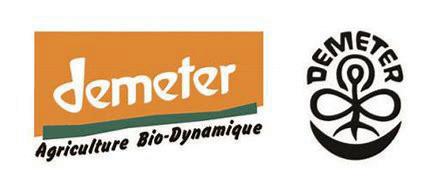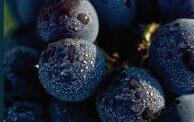BORDEAUX TODAY







Bordeaux is located in Southwest France and is adjacent to the Atlantic Ocean. Bordeaux’s 65 AOC’s are segmented by three waterways: the Garonne and Dordogne rivers and the Gironde, a 50-mile-long estuary flowing northward into the Atlantic.





This year, Bordeaux reported the highest 12-month regional growth rate in the past 35 years, driven by strong consumer demand and U.S. hospitality reopening.




Bordeaux sets the standard for quality. With an average bottle price of $20 and more than two thousand years of fine winemaking history, Bordeaux offers vast opportunities for consumers to trial wines of distinctive character at accessible price points.
Only 4% of Bordeaux producers are classified growths.

The U.S. is the number one market for dry white Bordeaux, representing 4.13 million bottles

Bordeaux winemakers have perfected the art of cultivating and blending Cabernet Sauvignon, Merlot, and Sauvignon Blanc for centuries. Blending in Bordeaux is more than a just a mix of grape varieties – it is at the heart of the region’s winemaking DNA.
Bordeaux’s dry white, rosé, and Crémant styles are more diverse and exciting than ever; the red blends are brighter, fresher, more supple and ready-to-drink at an early age; sweet Bordeaux offers adventurous pairing possibilities — there is a Bordeaux bottle for every occasion and price point.
Bordeaux today has embraced a younger generation of winemakers who bring curiosity, innovation and a modern approach while respecting the region’s tradition and heritage.
75% of Bordeaux producers hold environmental certifications and uphold a collective commitment to sustainable winemaking.

Look for the following logos which designate environmental certifications:







The reputation of Bordeaux wines owes much to their diversity: the variety of soils, microclimates, and talented winegrowers, and the meticulous blending of world-renowned grape varieties, have made Bordeaux synonymous with quality and elegance.








Bordeaux’s dry whites are the region’s best kept secret for for dry white Accounting for 9% of total production, Bordeaux’s dry whites are Sauvignon Blanc-dominant. Sémillon is added for richness and ageability and used for the production of sweet



Sweet Bordeaux offers accessible appeal to sweet wine lovers and a range of aromas from sweet and fruity to complex bouquets.
Sauternes & Barsac are some of the world’s most age worthy and acclaimed sweet wines, while neighboring appellations like Cérons and Loupiac make accessible sweet and
Crémant de Bordeaux is known for its creamy texture and sales of this style have steadily doubled over the past three years. Customers can also expect top quality rosé at accessible price points made from classic Bordeaux blends or entirely from Cabernet Sauvignon and Cabernet Franc.
Crémant de Bordeaux offers similar quality to Champagne for a fraction of the cost.

Bordeaux Rosés come in styles from pale and light to dark and more structured. Well-known grape varieties produce wines with clear varietal character and firmer structure. They show balance between ripeness and freshness with a diversity of terroir for blending.



Nice vintage to sell and drink! Cool and damp during the summer, warm and dry autumn. Fragrant, high-toned wines that give a lot of early drinking pleasure!

Considered a great vintage dry, warm, July with a cool August. Ripe, wellstructured, homogenous.
A great vintage with high critical acclaim. Dry summer and cool nights resulted in small, thick-skinned berries. High acid, high tannin, wonderfully aromatic.
A “classic” and excel lent vintage with overall higher acidity than 2018. Small berries, high levels of anthocyanins, fully ripe and concentrated wines.

Severe frost resulted in the smallest harvest in 25 years. Good wines in this vintage, especially from the Médoc, but quantities were limited. 2018 2017 2019
Warm and dry summer and autumn. Higher alcohols and lower acidity, ripe, intensely colored and wellstructured. 2018 should be long-lived.


Situated on the Left Bank of the Gironde estuary, Médoc encompasses a huge variety of estates from some of the most iconic châteaux from the 1855 classification, to approachable crus bourgeois, crus artisans and cooperative cellars. With both highly affordable and world-famous icons, Médoc offers affordable luxury and excellent value for money thanks to unique terroirs, larger estates, and a combination of traditional and state-of-the-art production techniques.











• Late-ripening

Suited to warm, gravelly soil
Blended with Merlot, Cabernet Franc and Petit Verdot depending on the typicity of the estate and selection of the winemaker
Cabernet Sauvignon adds intense color and aromas of blackcurrant, blackberry, musk and spices to Médoc wines. Lending good acidity and structure, Cabernet Sauvignon from the Médoc is contributes fine tannic structure and excellent aging potential.
The Médoc terroir features complex geological diversity formed by various glaciation periods, which, alongside erosion, created magnificent gravelly soils. These soils are considered some of the most coveted, finest terroirs in the world.


A mixture of stones and clay
Deposits left after flooding by the Garonne and Dordogne Rivers, and the Gironde Estuary
The oldest gravel soil, consisting of deposits left by rivers flowing down from the mountains
In addition to the 8 AOCs, Médoc is also home to other designations, including the famed 1855 Grands Crus Classés, Cru Bourgeois and Cru Artisan.


• The Crus Bourgeois du Médoc classification is awarded for 5 years and consist of 3 categories: Cru Bourgeois, Cru Bourgeois Supérieur and Cru Bourgeois Exceptionnel. The classification is based on wine quality and additional criteria liked environmentally friendly winegrowing practices.

249 Châteaux ranked: 179 Crus Bourgeois, 56 Crus Bourgeois Supérieurs and 14 Crus Bourgeois Exceptionnels.
• The classification will be reviewed every 5 years, with a new list in 2020* and then 2025. * Classified Vintages in this Classification: 2018 to 2022
• A designation that has been in use for nearly a century and a half for estates where crafts and winegrowing were practiced simultaneously. This designation was formally created in 2006, completed in 2021 and reviewed in 2018 Cru Artisan estates primarily consist of very small family estates where winegrowing traditions have been maintained.

• The classification is reviewed every 5 years.
Established at the request of Napoléon III, the 1855 Classification created a hierarchy of châteaux based on market prices and unwavering quality. In total, there are 61 crus in red and 27 crus in white.




